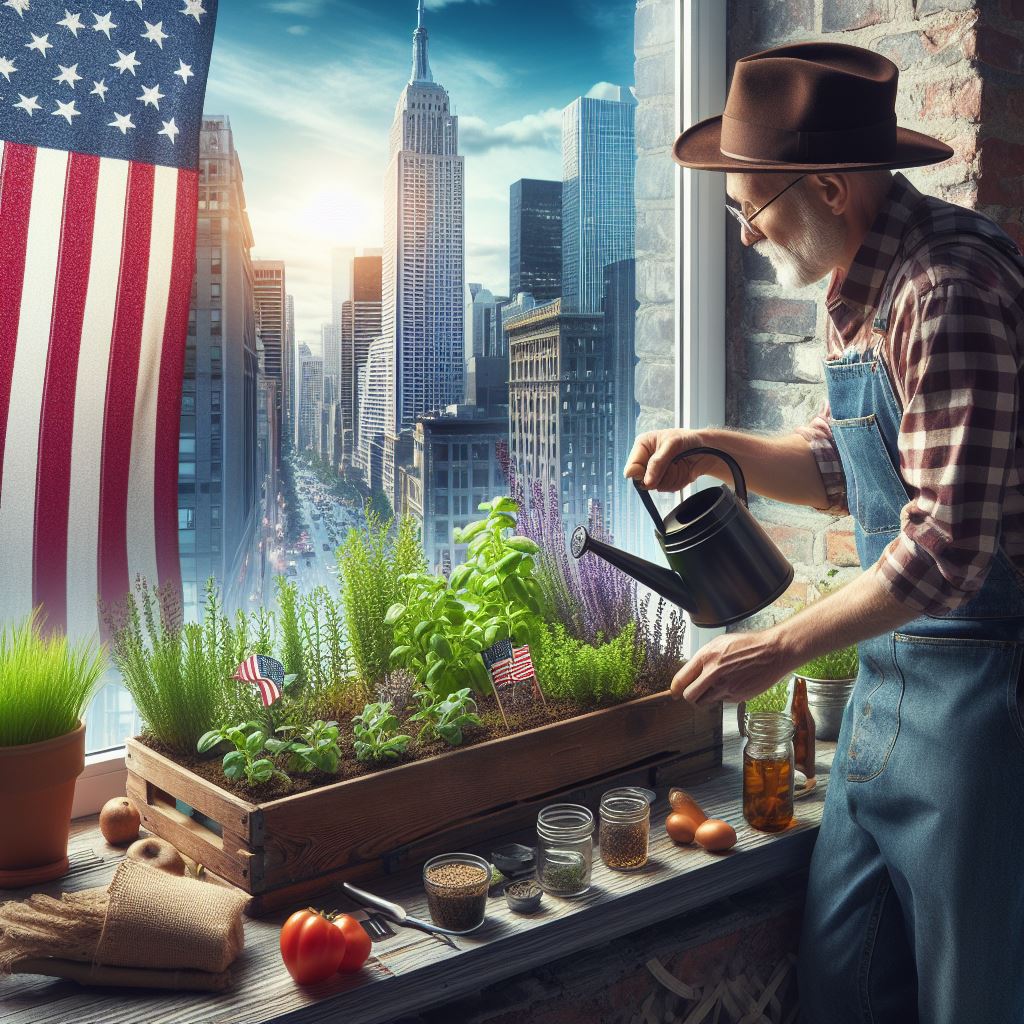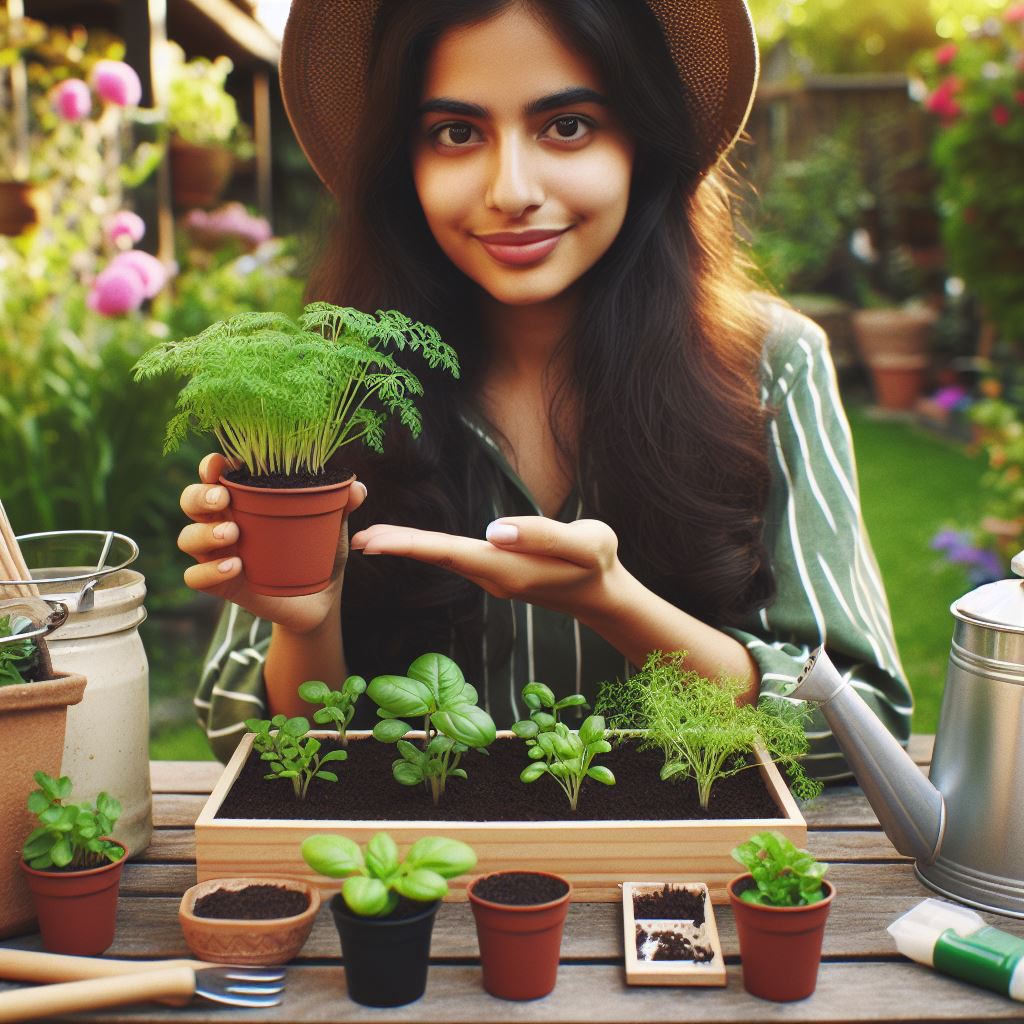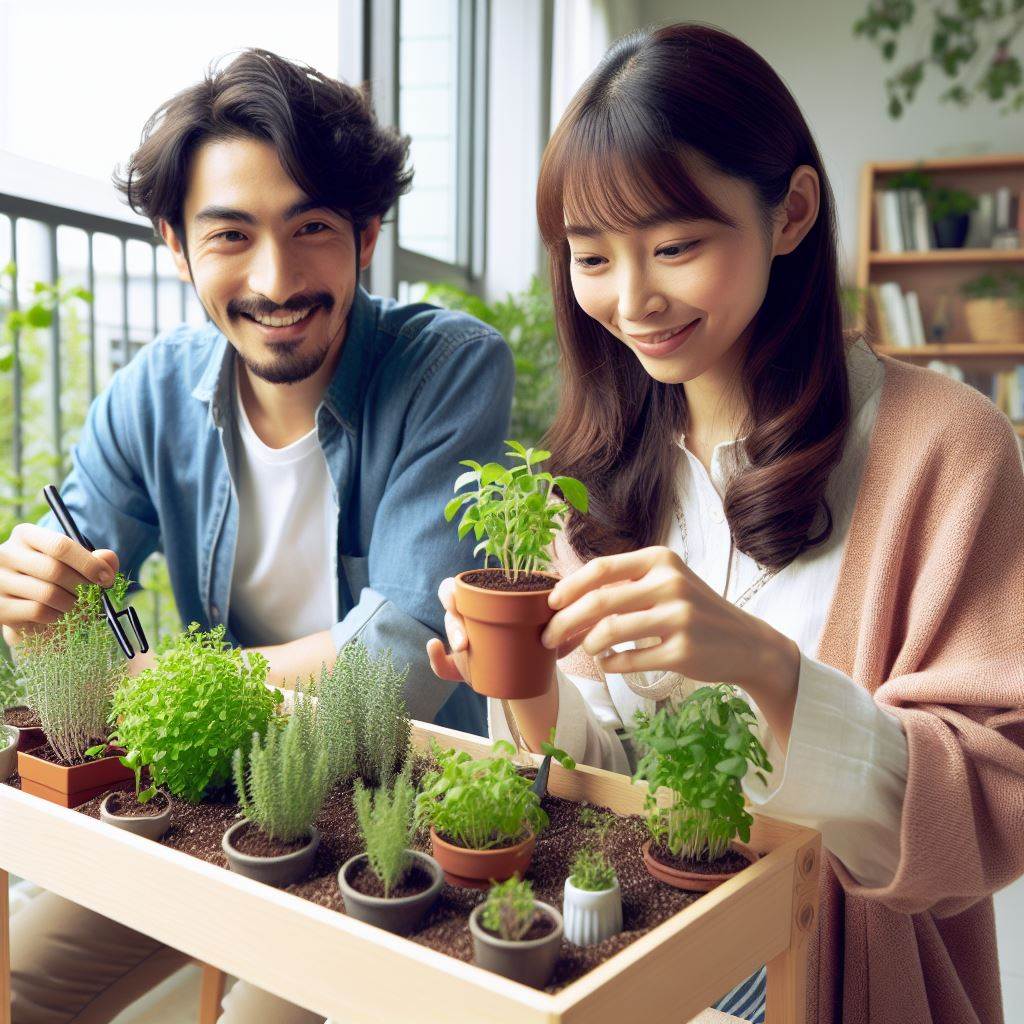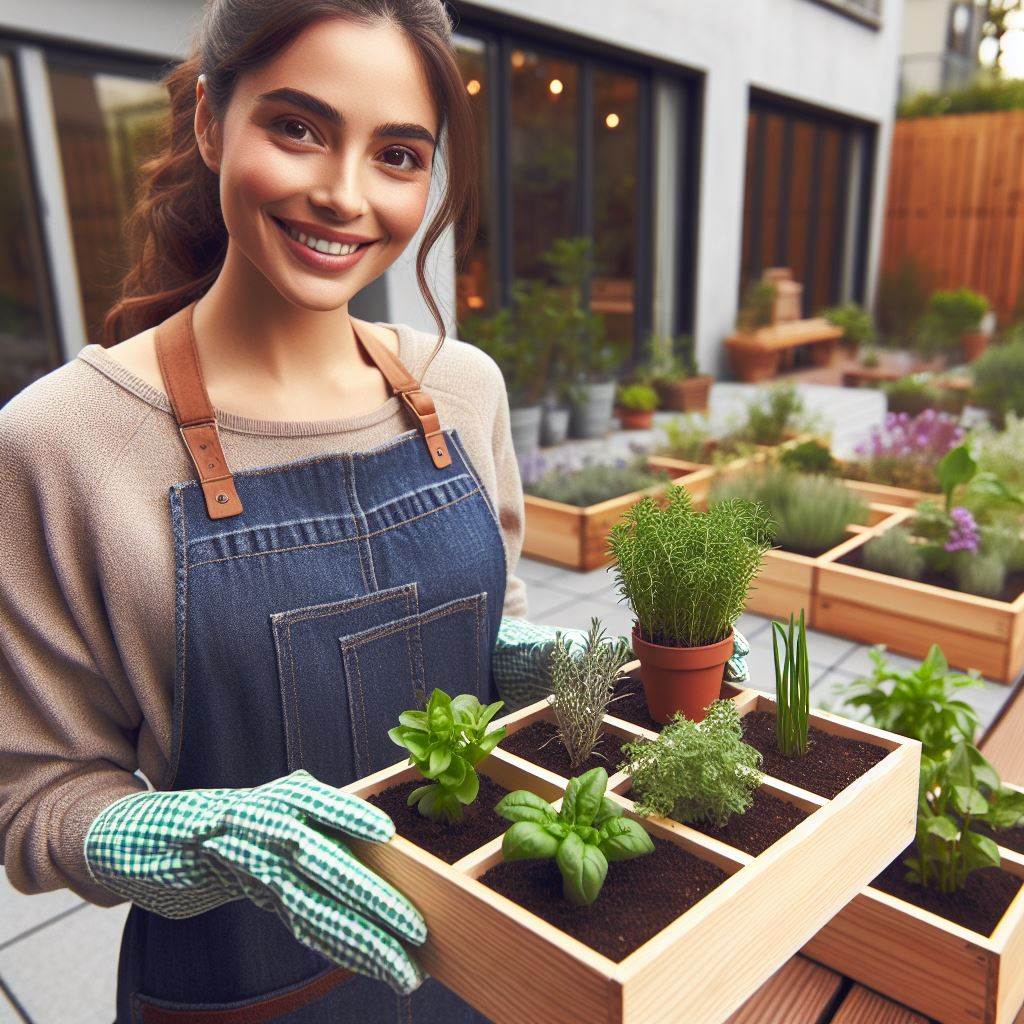Introduction
Definition of urban herb farming
Discover essential Urban Herb Farming Tips for Window Ledge cultivation, which involves growing herbs in urban or city environments.
It transforms small spaces into productive green areas.
Growing popularity of urban herb farming
As urban populations rise, interest in urban herb farming continues growing.
Urbanites seek sustainable, locally grown food and greenery.
Benefits of urban herb farming
Urban herb farming provides freshly grown herbs, beautifies spaces, and connects city dwellers with nature.
It’s eco-friendly and therapeutic.
Tips for successful urban herb farming on a window ledge
This guide offers tips for successful urban herb farming on a window ledge.
It covers herb selection, container choices, soil prep, and maintenance.
Even with limited space, you can grow a thriving urban herb garden.
Choose suitable herbs, use the right containers, prepare soil properly, and maintain optimal conditions.
Basically, urban herb farming on a window ledge offers a convenient and rewarding way to enjoy fresh herbs in urban settings.
By following these tips, you can successfully cultivate and harvest your own herbs, even with limited space.
Start your own urban herb farm today and experience the joys of growing your own herbs at home.
Choosing the Right Herbs
When it comes to urban herb farming, selecting the right herbs is crucial.
Consider the following factors:
Transform Your Agribusiness
Unlock your farm's potential with expert advice tailored to your needs. Get actionable steps that drive real results.
Get StartedPersonal preference and intended use
Choose herbs that you personally enjoy and will use frequently in your cooking or for medicinal purposes.
For instance, if you love the taste and aroma of basil, go ahead and plant it.
If you often suffer from headaches and want a herb for relief, consider growing lavender.
Remember, the herbs you choose should align with your own tastes and needs.
Available space and lighting conditions
Before planting any herbs, evaluate the available space and lighting conditions in your window ledge or urban garden.
If you have limited space, opt for herbs that can thrive in small containers or vertical planters, such as thyme or rosemary.
Additionally, take note of how much sunlight your herbs will receive.
Most herbs require at least 6 hours of direct sunlight daily, so choose accordingly.
Easy-to-grow herbs for beginners
If you’re new to herb farming, it’s best to start with herbs that are relatively low-maintenance and forgiving.
Mint, for example, is a resilient herb that can tolerate different lighting conditions and is difficult to kill.
Other beginner-friendly herbs include chives, parsley, and oregano.
By choosing easy-to-grow herbs, you’ll gain confidence and experience in herb gardening.
Versatile herbs for various culinary recipes
When selecting herbs for your window ledge, opt for ones that can be used in a wide range of culinary recipes.
Basil, cilantro, and parsley are versatile herbs that can enhance the flavors of various dishes, from pasta sauces to salads.
Thyme, rosemary, and sage are excellent choices for adding depth and aroma to meat and vegetable dishes.
By having a variety of versatile herbs at your disposal, you’ll be able to experiment and create diverse flavors in your cooking.
In conclusion, choosing the right herbs for your urban herb farming venture is essential.
Consider personal preferences, available space, and lighting conditions.
Start with easy-to-grow herbs and include versatile herbs for culinary experimentation.
Read: Herb Gardening 101: Perfect for Tiny Yards
Setting up Your Window Ledge Herb Garden
Choosing suitable containers or pots
When setting up your window ledge herb garden, it is crucial to select the right containers or pots.
The containers should be proportionate to the size of the herbs you want to grow.
Choose pots made of materials like terracotta or plastic that offer good drainage and prevent waterlogging.
Providing proper drainage for herb plants
Drainage is vital for the health of your herbs, so make sure your containers have drainage holes at the bottom.
Showcase Your Farming Business
Publish your professional farming services profile on our blog for a one-time fee of $200 and reach a dedicated audience of farmers and agribusiness owners.
Publish Your ProfileYou can also use pebbles or broken pottery pieces at the base to enhance water drainage.
Remember to place a saucer or tray under the containers to prevent any water from damaging your window ledge.
Determining the right soil mix for herbs
For optimal growth, herbs require well-draining soil that is rich in nutrients.
Prepare a suitable soil mix by combining equal parts of potting soil, perlite, and compost.
Avoid using garden soil alone as it may be too dense and lack the necessary nutrients for potted plants.
Placing the herbs in a suitable location on the window ledge
Choose a window ledge that receives at least 6-8 hours of sunlight daily.
Ensure the herbs are placed in a location where they won’t be disturbed or damaged by strong winds.
Consider the accessibility of the herbs for watering and harvesting when deciding on their arrangement.
Importance of natural light and temperature
Natural light and temperature play crucial roles in the growth and development of herbs.
Herbs, especially those typically grown indoors, require ample sunlight for photosynthesis.
Ensure the temperature around the window ledge remains between 65-75°F (18-24°C) for optimal growth.
Protect herbs from extreme temperatures by using curtains or blinds during the hot summer or cold winter months.
Read: Small Garden, Big Flavor: Growing Herbs Easily
Watering and Maintenance Tips
Establishing a regular watering schedule
Consistency is key when it comes to watering your urban herb farm.
Set a schedule and stick to it.
Avoiding overwatering or underwatering
Too much or too little water can be detrimental to your herbs.
Find the right balance.
Monitoring and adjusting moisture levels as needed
Pay attention to the moisture levels of your herbs’ soil and make adjustments accordingly.
Avoiding overwatering or underwatering
Check soil moisture levels regularly to avoid overwatering or underwatering your plants.
Stick your finger in the soil to assess dryness.
Monitoring and adjusting moisture levels as needed
Monitor your herbs closely and adjust watering schedules as needed.
Plants may require more or less water depending on temperature and humidity.
Benefits of organic pest control methods
Use organic pest control methods like neem oil or insecticidal soap.
These eco-friendly solutions keep your herbs pest-free without harsh chemicals.
Pruning and harvesting techniques for optimal growth and yield
Prune your herbs regularly to encourage bushier growth and higher yields.
Harvest frequently by snipping off stems above the leaf node.
Read: Maximize Your Balcony: Top Herbs for Small Spaces

Troubleshooting Common Issues
Common herb pests and diseases
- Pests like aphids, spider mites, and whiteflies can attack your indoor herb garden.
- Look for signs of pests, such as holes in leaves, sticky residue, or webs.
- Use organic pest control methods like neem oil or insecticidal soap to eliminate pests.
- Diseases like powdery mildew and root rot can also affect herb plants.
- Ensure good air circulation and avoid overwatering to prevent these diseases.
- Remove infected plants or leaves to prevent the spread of diseases.
Dealing with nutrient deficiencies or excesses
- Nutrient deficiencies can lead to stunted growth or yellowing leaves in herb plants.
- Test your soil or use a nutrient kit to identify any deficiencies or excesses.
- Adjust the pH level of your soil if necessary to optimize nutrient uptake.
- Use organic fertilizers or compost to provide the necessary nutrients to your herbs.
- Follow the recommended dosage when fertilizing and avoid overdoing it, which can lead to nutrient excesses.
- Regularly monitor the health of your herbs and make adjustments as needed.
Potential challenges of growing herbs indoors
- Limited light exposure can be a challenge for growing herbs indoors.
- Insufficient natural light can result in leggy or weak plants.
- Supplement with artificial light sources like grow lights to ensure enough light for your herbs.
- Improper watering can also be a challenge, as overwatering or underwatering can harm your herbs.
- Finding the right balance and frequency of watering is crucial for their health.
- Lack of space can be an issue, but creative solutions like vertical gardening or using hanging planters can maximize space.
Tips for troubleshooting and finding solutions to problems
- Regularly inspect your herbs for any signs of pests, diseases, or nutrient deficiencies.
- Research and identify the specific issue affecting your herb plants.
- Seek advice from gardening experts or online forums to find solutions to your specific problem.
- Take immediate action to address the issue, whether it’s using organic pest control or adjusting nutrient levels.
- Keep a record of your troubleshooting efforts and any successful solutions for future reference.
- Remember that trial and error is part of the learning process, so be patient and persistent in finding solutions.
Identifying and addressing common herb pests and diseases, dealing with nutrient deficiencies or excesses, discussing potential challenges of growing herbs indoors, and providing tips for troubleshooting and finding solutions are crucial for successful urban herb farming on your window ledge.
With proper care and attention, you can enjoy a thriving indoor herb garden all year round.
Read: Water-Efficient Plant Choices for Urban Farms
Enjoying the Fruits of Your Labor
Harvesting herbs at the right time for best flavor and freshness
- Harvest herbs when they have reached their peak flavor, usually in the morning.
- Cut the herbs just above a leaf node to encourage new growth.
- Use a clean pair of scissors or gardening shears to avoid damaging the plant.
Different ways to use freshly harvested herbs
- Add freshly harvested herbs to salads, soups, stews, or pasta dishes for an extra burst of flavor.
- Create herb-infused butters by blending softened butter with chopped herbs and refrigerating until firm.
- Make herb-infused vinegars by placing fresh herbs in a glass jar, covering with vinegar, and steeping for a few weeks.
Encouraging experimentation with homemade herbal teas or infused oils
- Dry fresh herbs by hanging them upside down in a cool, dark place until they are crispy.
- Use dried herbs to make your own herbal teas by steeping them in boiling water for a few minutes.
- Infuse oils with herbs by filling a jar with dried herbs, covering them with oil, and letting it sit for several weeks.
Promoting the idea of sharing excess herbs with friends and neighbors
- If you have an abundance of herbs, consider sharing them with those around you.
- Give small potted herb plants as gifts to friends or neighbors who are interested in herb gardening.
- Swap herbs with fellow gardeners, creating a community of herb enthusiasts.
By following these tips, you can fully enjoy the fruits of your urban herb farming labor.
Harvesting herbs at the right time ensures that you get the best flavor and freshness from your plants.
Don’t limit yourself to just using herbs in cooking – experiment with herbal teas and infused oils to explore new flavors and aromas.
And don’t forget to share the love by sharing your excess herbs with friends and neighbors. Happy herb farming!
You Might Also Like: Neem Oil: A Gardener’s Best Friend
Conclusion
Recap of main points discussed in the blog post
Throughout this blog post, we have explored the wonderful world of urban herb farming on your window ledge.
We discussed the importance of choosing the right herbs, providing them with proper sunlight and water, and using suitable containers.
Encouraging readers to start their own urban herb garden
Now is the perfect time for you to start your own urban herb garden.
Showcase Your Farming Business
Publish your professional farming services profile on our blog for a one-time fee of $200 and reach a dedicated audience of farmers and agribusiness owners.
Publish Your ProfileWith just a little effort and creativity, you can enjoy fresh, flavorful herbs right at your fingertips.
Importance of perseverance and patience in herb farming
Remember that herb farming requires perseverance and patience.
It may take some time for your herbs to grow and thrive, but don’t get discouraged.
Keep watering, nurturing, and monitoring their progress.
Final thoughts on the benefits and satisfaction of urban herb farming
Urban herb farming offers a multitude of benefits.
Not only does it provide access to fresh herbs, but it also adds beauty and greenery to your living space.
The satisfaction of growing your own herbs is truly rewarding.
So, what are you waiting for?
Let’s get started on your urban herb garden adventure today!




